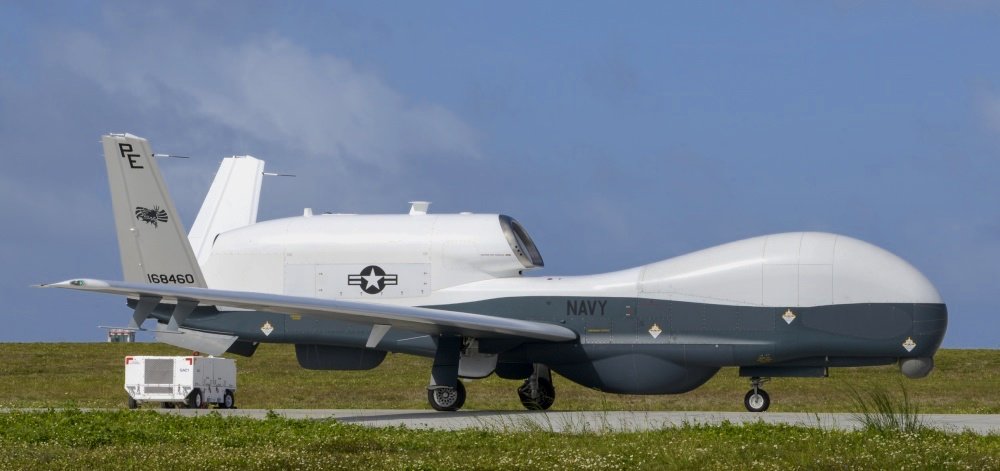Almost three months after arriving in Guam, a pair of MQ-4C Triton autonomous, unmanned aircraft have integrated into fleet operations and training flights and stretched the Navy’s maritime domain awareness across the Indo-Pacific, according to the US Navy.
The Navy is counting on the Triton, which can operate at greater than 50,000-foot altitudes and at the 2,000-mile-plus range, to provide an unmanned platform for persistent, maritime intelligence, surveillance, and reconnaissance capabilities and work alongside its manned fleet of reconnaissance and surveillance patrol aircraft. The Tritons with Unmanned Patrol Squadron 19 – the Navy’s first unmanned aircraft squadron – arrived in Guam in late January to support CTF-72, which oversees the patrol, reconnaissance and surveillance force in the U.S. 7th Fleet region.
“Bringing Triton forward creates a complex problem set for our adversaries,” Cmdr. Michael Minervini, VUP-19’s commanding officer, said in a statement. “Our ability to provide persistent ISR to fleet and combatant commanders is unmatched in naval aviation.”
Along with supporting current operations for several Indo-Pacific-based task forces, one Triton drone recently joined in a “close formation” taxiing along with more than a dozen manned aircraft prior to takeoff at Anderson Air Force Base, Commander Task Force 72 officials said.
The radar and sensors-packed Triton drones have been operating from Anderson AFB to provide, according to the Navy, an “early operational capability (EOC) to further develop the concept of operations and fleet learning associated with operating a high-altitude, long-endurance system in the maritime domain.” Tritons’ onboard sensors and radar can track ships at sea, match tracks with automated identification systems and relay that information to shore-side bases or nearby aircraft, for example.
While the Tritons fly from Guam, the “Big Red” squadron of 300 personnel isn’t based in Guam. A group of VUP-19 aircrew and maintainers are forward-deployed to Guam, but squadron officials and mission operators are based at VUP-19’s home at Naval Air Station Jacksonville, Fla., and a permanent detachment including maintenance personnel reside at NAS Point Mugu, Calif.
CTF-72 has been working with the squadron “to provide Indo-Pacific focused expertise to each crew prior to executing their missions,” the Navy said.
“It’s been a long road to get to 7th Fleet, but it’s an exciting time to show off what our sophisticated sensor suite can do,” Naval Aircrewman (Operator) 1st Class Ryan Gray, VUP-19’s operations lead petty officer, said in the CTF-72 story. “Our operators have been training rigorously to hone their expertise and they are the best at what they do. We are chomping at the bit to support the combatant commanders and maintain an overwatch posture to provide persistent intelligence, surveillance and reconnaissance.”
, originally planned for late 2018, was delayed after a Triton crashed during operational testing in California in September 2018. The Navy received the first delivery of the MQ-4C in 2017.
The Triton can fly for more than 24-hours at a time, at altitudes higher than 10 miles, with an operational range of 8,200 nautical miles, according to manufacturer North Grumman. The Navy’s program of record would field 68 aircraft.
Photo: US Navy
Source: USNI News

